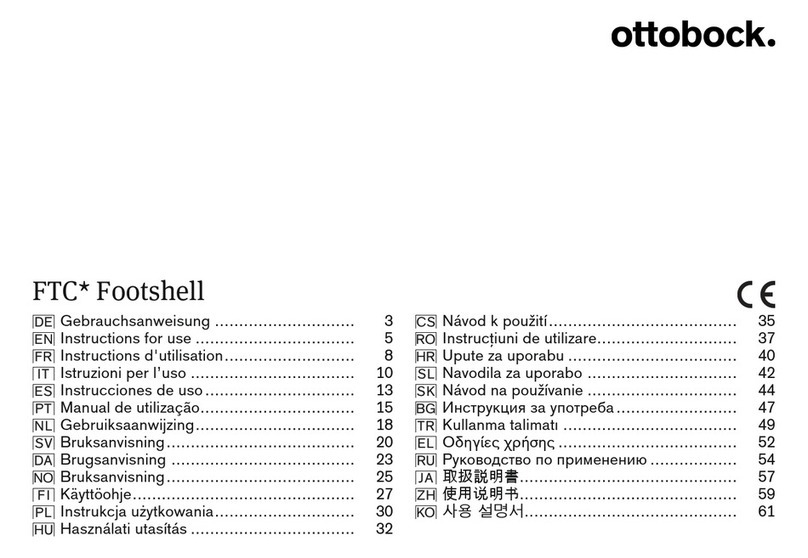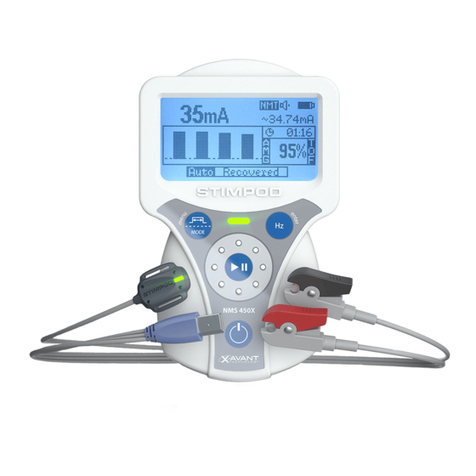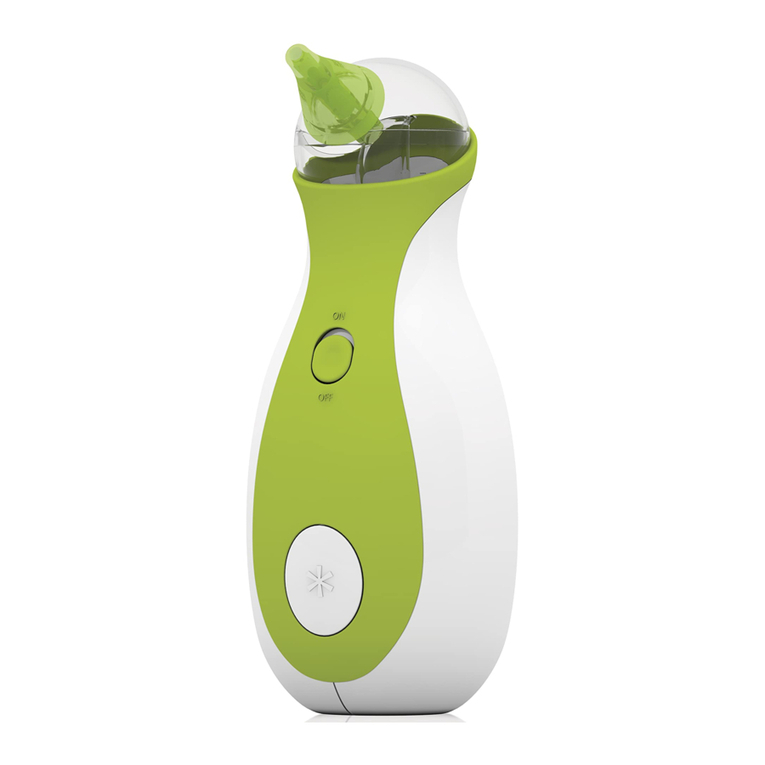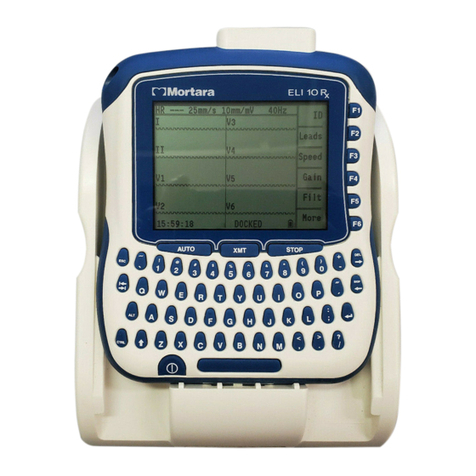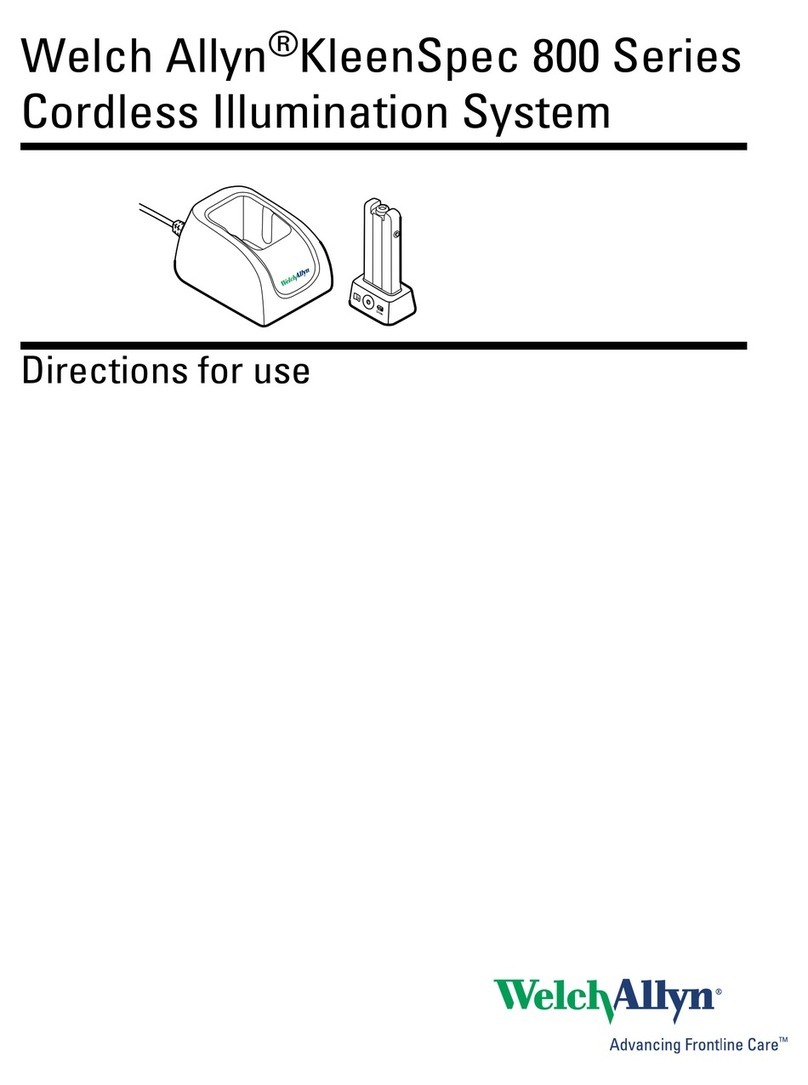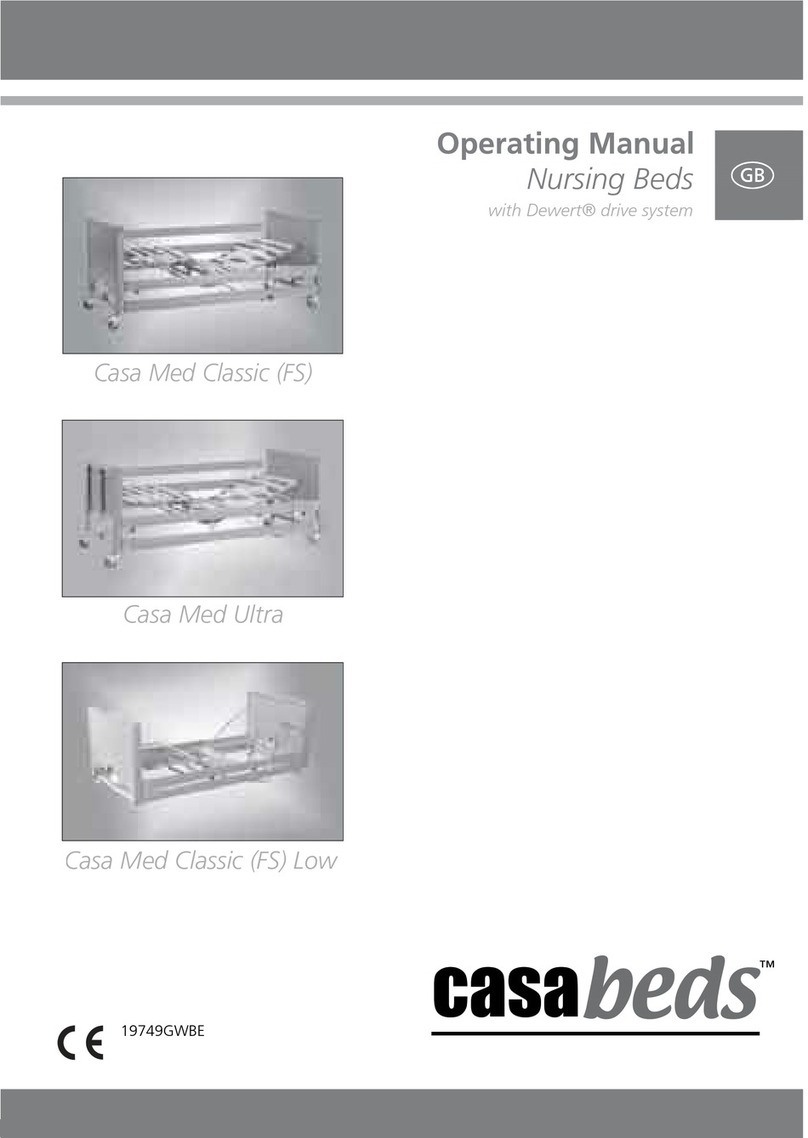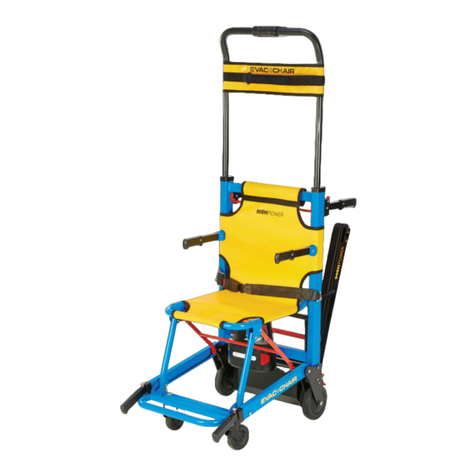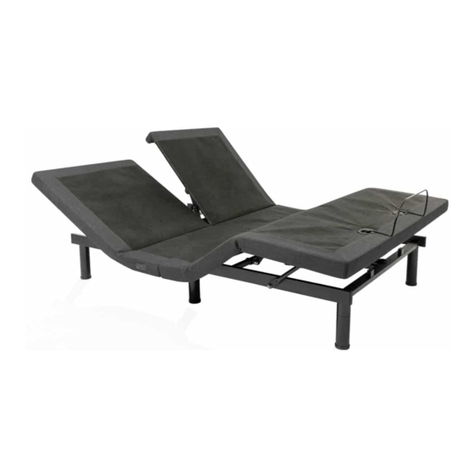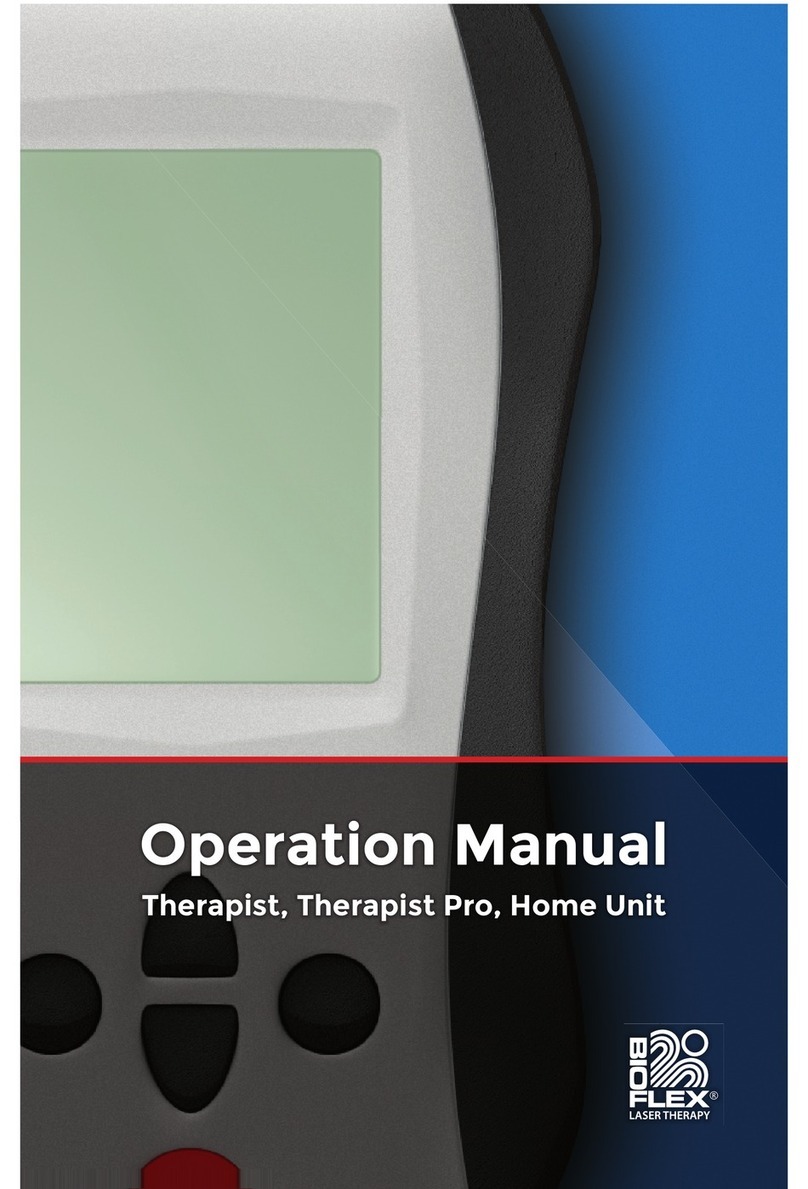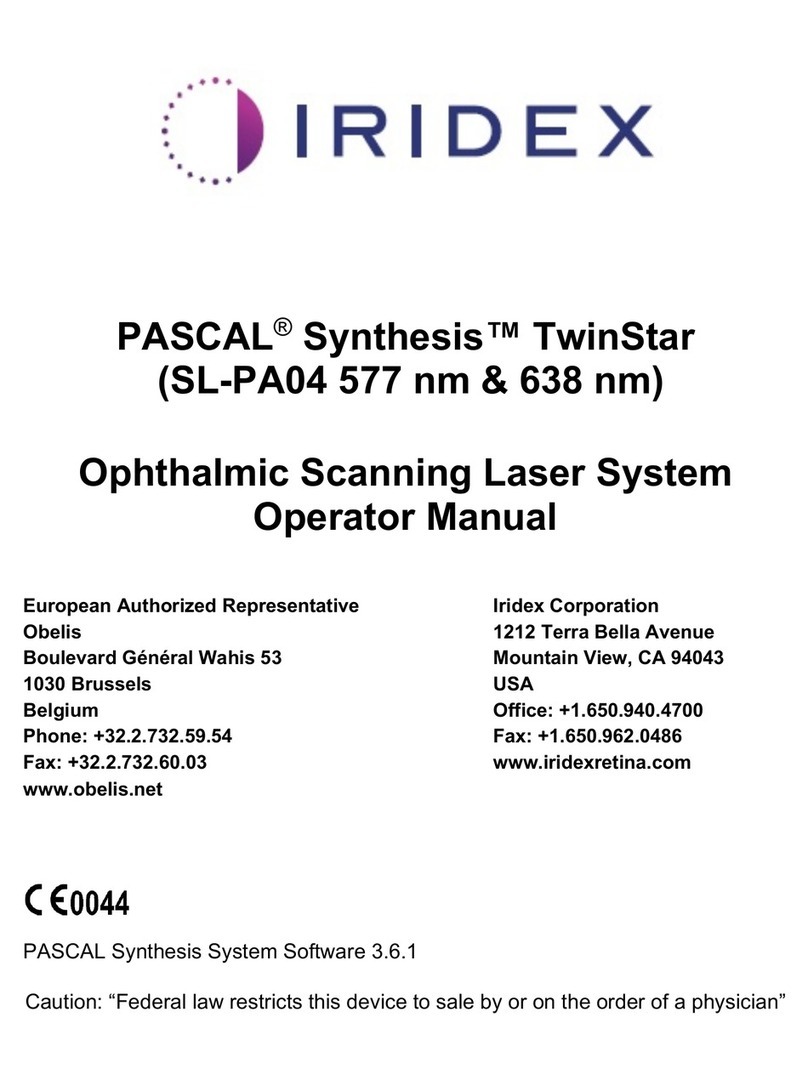Ossenberg KLASSIKER User manual

Walking Aid Instrucons for Use (Table 1.A) - EN
Intended use and indicaon
Our walking aids are designed for people with signicant mobility impairment with impairment to movements, compromised balance with suciently intact walking ability and impaired
coordinaon. They are used to maintain, promote and stabilise walking or to parally or fully relieve the strain on the lower limbs. The walking aids can be used both indoors and outdoors. It is
imperave that the safety instrucons are also observed!
Contraindicaon
The use of walking aids is unsuitable if there is a loss of limb in both arms or joint contractures/joint damage in both arms.
General safety informaon
Do not hang any bags, pouches or other objects on the walking aid! Walking aids may under no circumstances be used for any other purpose than that for which they are intended, e.g. for
liing or moving objects or as a tool for switching light switches or pressing buons on lis! It is essenal that the ground has a good grip to ensure a secure hold of the walking aids! Avoid wet
oors or surfaces such as gravel, sand, foliage, ice or snow! Pay aenon to stumbling points such as unevenness, holes in the oor, loose oor coverings or edges, because the walking aid can
unexpectedly slip away or sink in! Extra cauon is recommended when lighng condions are insucient, since irregularies in the ground can then only be seen with diculty! When adjusng
the push-buon, it must protrude from the hole as far as it will go (Fig. 2)! The holes for adjusng the walking aid undergo a certain amount of wear. It is important to ensure that they are not
worn out, as this would prevent the push buon from locking securely. When adjusng the clip, the plasc clip must have a posive t when inserted (Fig. 1)! Prior to each use, make sure that
all screw connecons are rmly ghtened! If forearm-supported walking aids are used with the arm clip closed, it must be ensured that the arm clip is not pressed down unintenonally;
otherwise there is a risk of pinching or bruising the skin or ngers.
Adjusng the walking aid
Warning! Please contact your specialist dealer to ensure proper funconal and ergonomic adjustment! Incorrectly adjusted walking aids may restrict the funconality of the walking
aid or lead to overloading or incorrect loading of the paent! The walking aids are handed over to you as a paent in a proper condion, whereby they are individually adjusted to
your body by your specialist dealer or health care specialist. If you have any doubts as to whether this is the case, please contact the responsible specialist personnel. The walking
aid can only oer you the relief you desire if it is opmally adapted to your body size. Adjustment: If your walking aid is ed with a union nut, this must be loosened by approx. half a turn
anclockwise prior to adjustment (Fig. 1). Unlock the height adjustment by pressing in the push buon or pushing out the clip. Adjust the length of the supports to your body size by pulling the
support tubes out or pushing them together. Lock the height adjustment once again by aligning the tubes as such, that the two locking holes are on top of each other, whereby the push-buon
engages again. In case of clip adjustment, reinsert the clip. Following adjustment, the union nut must be ghtened again. Height-adjustable walking aids can be shortened by max. 10 cm in
the lower part. Non-adjustable walking aids are shortened by individually adjusng the support tube to your size using a metal saw or a tube cuer. Cauon: Risk of falling due to walking aids
buckling when the height adjustment is not locked correctly! Check the correct locking aer each adjustment by aempng to twist or move the support! It is possible to adjust the anatomical
hard handle axially. Proceed as follows to adjust: 1. Push reectors out of the front handle. 2. Loosen the sleeve screw with six to eight turns. 3. Pull the handle forward and adjust it. 4. Tighten
the sleeve screw again and reinsert the reector. You can use a standard hexagonal spanner for this.
Use
There are many dierent ways to use the walking aids and it all depends on the individual restricons of the walking ability. Seek instrucon in the use of the walking aids from your specialist
dealer or health care specialist! Walking aids must not be used in water. Any penetrang water can lead to corrosion forming and consequently to an increased risk of breakage. Avoid prolonged
contact of the walking aids with moisture. The walking aids must be dried appropriately when they come into contact with water. The correct handling of the walking aids takes some pracce.
We therefore recommend geng addional support from an assistant at the beginning. We recommend using walking aids in pairs when you require support on both sides! However, only one
support should be used in general pracce, and then always on the side opposite the injured leg or the leg that needs to be protected! Guide the walking aids close to the body, not at an angle
facing outwards (Fig. 3)! You might fall otherwise! During use, grasp the handle(s) of the walking aid(s) completely and rmly with your hand! Always place the walking aids as straight as possible
on the ground so that you do not slip away! Find chairs with armrests to sit on. You will then be able to support yourself on the armrests when standing up! Wear shoes that are as comfortable as
possible with at soles so that your leg can beer withstand addional strain! If you do fall: if possible, let the walking aid fall to the side so that you do not fall onto it! Have someone accompany
and support you if possible, so that they can catch you if you fall! Try and arrange for qualied personnel to instruct you in climbing stairs with a walking aid! When climbing stairs with only one
walking aid, it is important to hold on to the railing using your free hand (Fig. 4)! When climbing stairs with two walking aids, hold both walking aids together in one hand and make sure to hold
on to the railing rmly using your free hand (Fig. 5)!
Precauonary measure
Using a walking aid places an unusual amount of strain on individual parts of the body! This may result in the following undesirable side eects: The hands, arms or items of clothing may
encounter pressure or chang! We recommend the use of grip and bracket pads as prevenve measures. When using two walking aids, make sure that you bear the enre body weight with
your arms and shoulders! Keep in mind that this can lead to pain and overexeron at the beginning or during prolonged exeron! It is important to take sucient breaks!
Storage and care
Never store the walking aids in the vicinity of heat sources such as furnaces, heaters or in places suscepble to heat in a car! Do not expose walking aids to sunlight for prolonged periods of
me! Strong sun or heat damages the plasc! Protect your walking aids from toppling over and from damage to the paintwork (e.g. by using straps or holders). The rubber buer is a wearing
part and must be replaced at regular intervals. Walking aids must only be used again aer an extended period of non-use following prior inspecon by qualied personnel! Warning! Never
clean handles and rubber caps using oily substances! There is a risk of slipping! In the event of contaminaon, clean the walking aids using a mild cleaning agent and a so cloth where neces-
sary. Never use cleaners containing solvents, since these will damage the plasc! Note: Should disinfecon be required, then a suitable disinfectant agent should be used. Please follow the
manufacturer‘s instrucons for use.
Limitaon of use
The walking aid must only be subjected to loads in accordance with the manufacturer's instrucons. Observe the maximum permissible body weight that is specied on the product! Please
contact your specialist dealer in the case of greater loads or in case of any doubts. Bent or damaged walking aids must not be used under any circumstances, since they can no longer oer the
necessary stability! Bent walking aids must also not be straightened because of the risk of breakage! Note: All serious incidents that occur in connecon with the product must be reported to
the manufacturer and the competent authority of the Member State in which the user and/or the paent is located.
Re-use (rental) / duraon of use
We shall only accept liability pursuant to the Product Liability Act for the inial placing of our products on the market. We only consent to reuse if we have rst inspected the product. The service
life of the forearm-supported walking aids is limited to 2 years. The user shall be responsible for the connued use of the forearm-supported walking aids aer this me.
Warranty and liability
You have purchased a high-quality Ossenberg product. In the event of a jused material defect in spite of the highest quality standards, Ossenberg reserves the right, as part of a 12-month
warranty, to either repair the defecve item or replace it with a defect-free follow-up delivery, at its own discreon. Please note that stricter legal regulaons are applicable to our nished
products, in parcular custom-made products. We shall not be liable for any damage caused by modicaons to our products. The warranty does not cover defects aributable to wear and
tear or improper handling. Wear parts are excluded from the warranty. Only original replacement parts and accessories must be used! Please contact your specialist dealer for replacement
parts, accessories and repairs.
Disposal Accessories
Please consult your specialist dealer about the regional disposal regulaons. The approved accessories for your walking aid can be found at:
hps://shop.ossenberg.com/en/downloads-to-the-product/
Technical data Replacement parts
Table 1.A Table 1.B
Symbol directory
Item number Batch number Read the operang instrucons Aenon
Manufacturer Date of manufacture Permissible body weight
This product complies with the
requirements of Regulaon (EU) 2017/745
(MDR)

Ossenberg GmbH
Kanalstraße 79
48432 Rheine
GERMANY
Phone
Fax
Internet
E-Mail
+49 (0) 59 71 - 9 80 46 0
+49 (0) 59 71 - 9 80 46 16
www.ossenberg.com
info@ossenberg.com
This is a product according to the guidelines of the Medical Devices Direcve. Furthermore the
Ossenberg GmbH is cered according to DIN EN ISO 13485.
State 23.03.2021
You can nd the latest instrucons for use at:
hp://bilder.ossenberg.com/Dokumente/
Downloads-zum-Arkel/Gebrauchsanweisungen/PDF/
Instrucons-for-use-forearm-crutches-EN.pdf
1.A Technical data
A B C D
220 KLASSIKER A1 / A2 23 cm 76 cm - 96 cm 16 mm 140 kg
2201 KLASSIKER
unadjustable A3 23 cm 103 cm 19 mm 140 kg
220ST KLASSIKER with
shock absorber A2 23 cm 76 cm - 81 cm 16 mm 140 kg
220Carbon KLASSIKER
Carbon A1 23 cm 76 cm - 96 cm 18 mm 140 kg
230 BIG XXL A1 23 cm 84 cm - 104 cm 19 mm 150 kg
230UE BIG XXL
extra long A1 23 cm 88 cm - 108 cm 19 mm 150 kg
2301 BIG XXL
unadjustable A3 23 cm 103 cm 22 mm 150 kg
241 KIDDY A1 / A2 19,5 cm - 24,5 cm 57 cm - 75 cm 16 mm 100 kg
3311 GOLIAT A3 24 cm 105 cm 22 mm 180 kg
3311UE GOLIAT
extra long A3 27 cm 120 cm 22 mm 180 kg
320 JUNIOR A1 / A2 21 cm - 26 cm 70 cm - 90 cm 16 mm 100 kg
321 / 321E VARIO A1 / A2 24 cm - 29 cm 79 cm - 98 cm 16 mm 130 kg
332 / 332E BIG XL A2 22,5 cm - 27,5 cm 73 cm - 103 cm 19 mm 150 kg
332UE / 332EUE BIG XL
extra long A2 22,5 cm - 27,5 cm 78 cm - 108 cm 19 mm 150 kg
332ST BIG XL
shock absorber A2 22,5 cm - 27,5 cm 76 cm - 91 cm 19 mm 150 kg
521 / 521E EASY A1 / A2 23 cm 73 cm - 94 cm 16 mm 130 kg
5211 EASY
unadjustable A3 24 cm 105 cm 19 mm 130 kg
1.B Replacement parts
220 KLASSIKER Art. 132 Art. 13120 Art. 14520 Art. 15227 Art. 716
2201 KLASSIKER
unadjustable ---Art. 15227 Art. 719
220ST KLASSIKER with
shock absorber -Art. 13120 Art. 14520 Art. 15227 Art. 716
220Carbon KLASSIKER
Carbon Art. 132 -Art. 14520 Art. 15227 Art. 929P
230 BIG XXL Art. 132 -Art. 14523 Art. 15227 Art. 719
230UE BIG XXL
extra long Art. 132 -Art. 14523 Art. 15227 Art. 719
2301 BIG XXL
unadjustable ---Art. 15227 Art. 723
241 KIDDY Art. 132 Art. 13120 Art. 14520 Art. 15227 Art. 716
3311 GOLIAT ---Art. 15227 Art. 723
3311UE GOLIAT
extra long ---Art. 15227 Art. 723
320 JUNIOR Art. 132 Art. 13120 Art. 14520 Art. 15227 Art. 716
321 / 321E VARIO Art. 132 Art. 13120 Art. 14520 Art. 15227 Art. 716
332 / 332E BIG XL -Art. 13123 Art. 14523 Art. 15227 Art. 719
332UE / 332EUE BIG XL
extra long -Art. 13123 Art. 14523 Art. 15227 Art. 719
332ST BIG XL
shock absorber -Art. 13123 Art. 14523 Art. 15227 Art. 719
521 / 521E EASY Art. 132 Art. 13120 Art. 14520 Art. 15227 Art. 716
5211 EASY
unadjustable ---Art. 15227 Art. 719
B
C
D
1. 2. 3. 4. 5.
A
A1 A2 A3
Push buon Clip unadjustable
This manual suits for next models
27
Popular Medical Equipment manuals by other brands
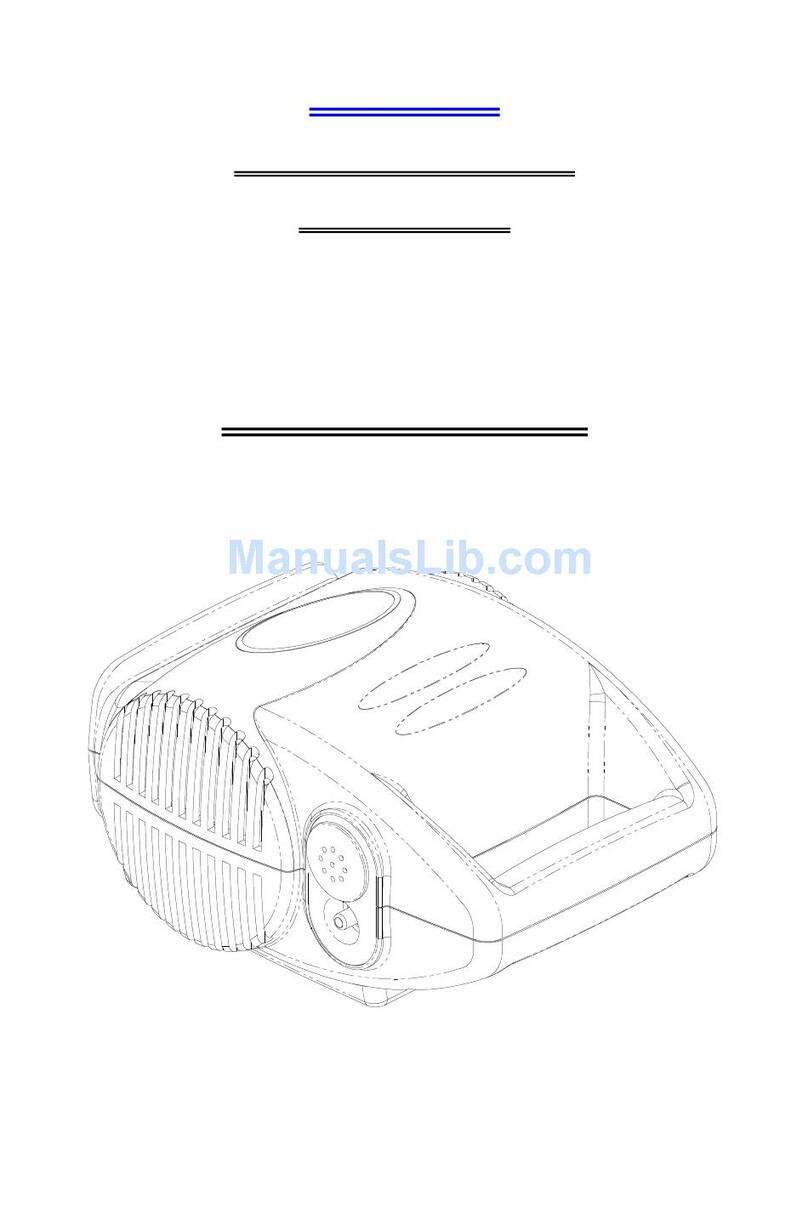
Merits Health Products
Merits Health Products Pioneer N282 user manual

Respironics
Respironics Millennium H600 Service and technical reference guide

Albrecht
Albrecht CDS ANKLE BRACE NEURO User instructions
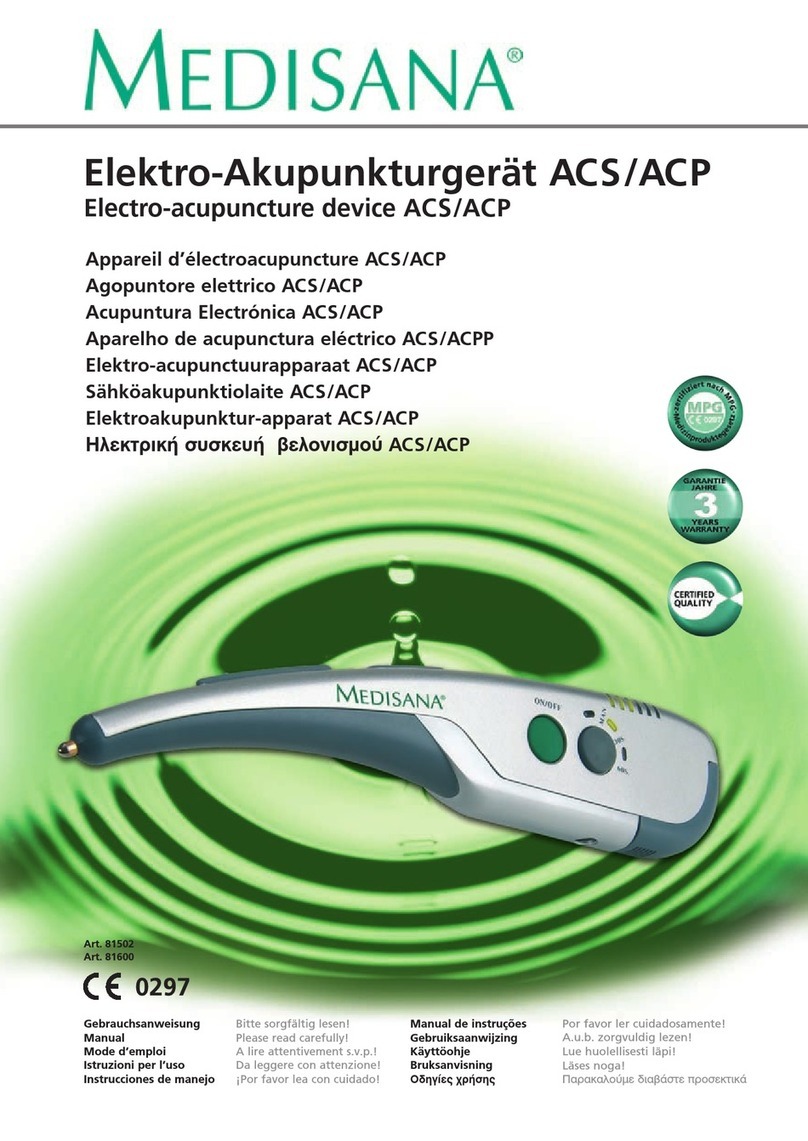
Medisana
Medisana 81502 manual
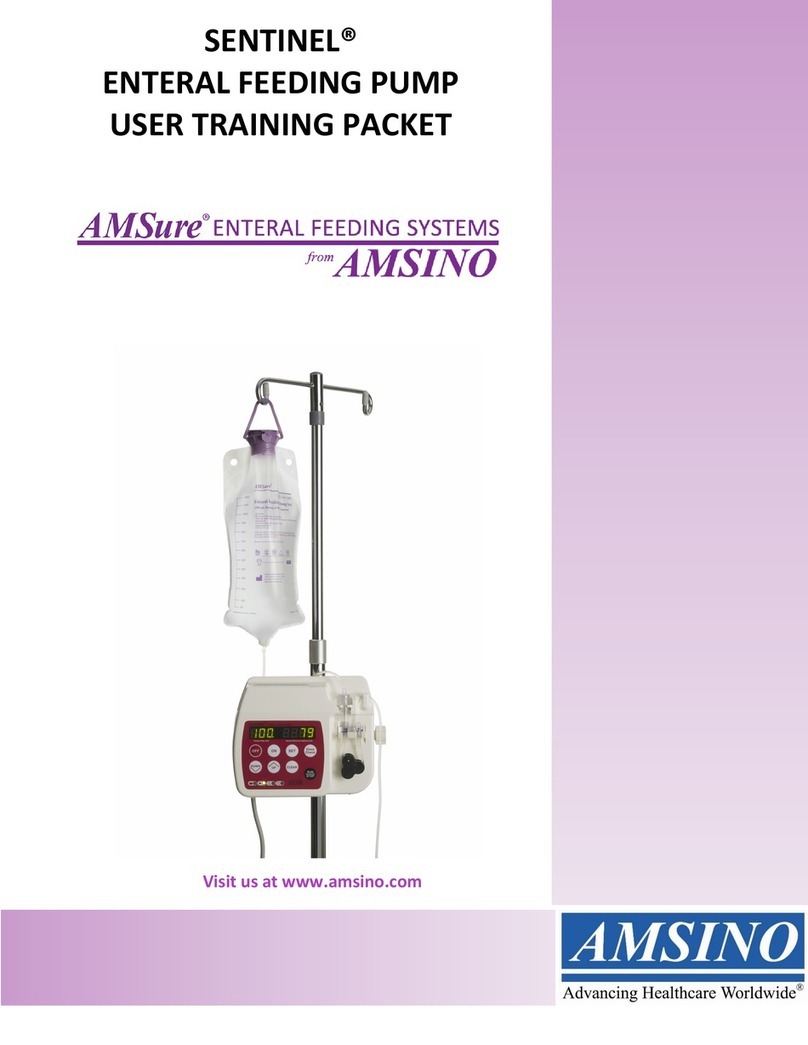
Amsino
Amsino AMSure SENTINEL ENF1004K manual
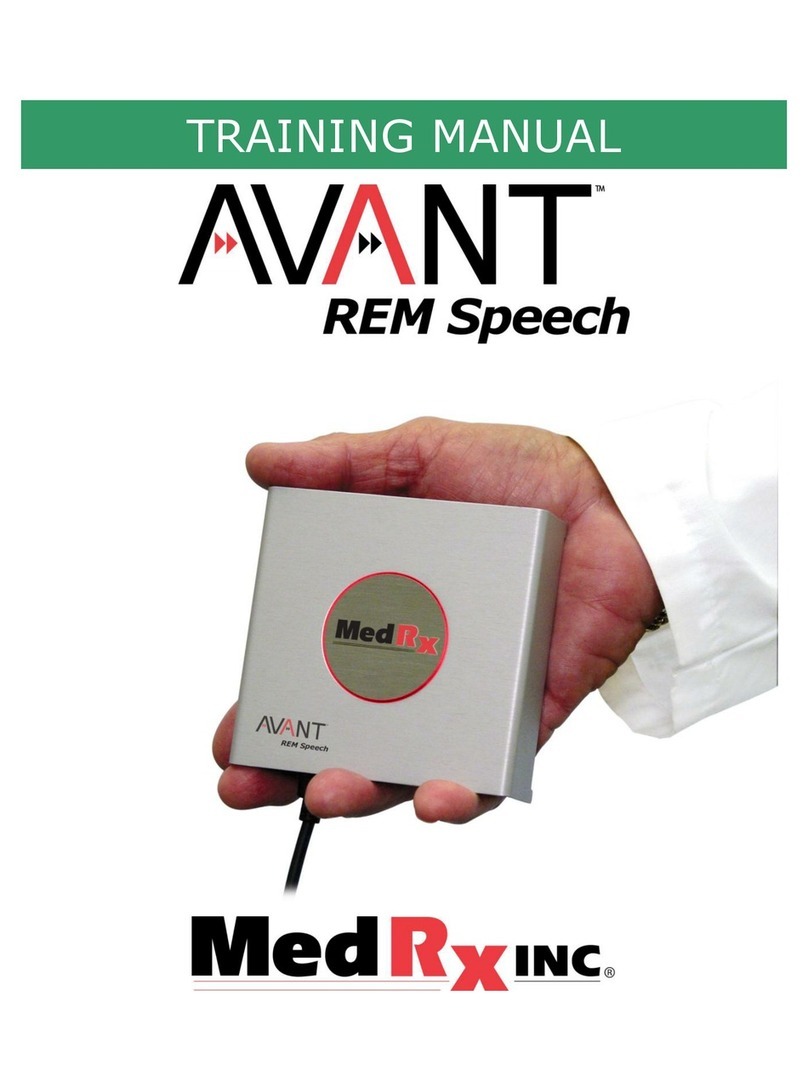
MedRx
MedRx Avant REM Speech Training manual
